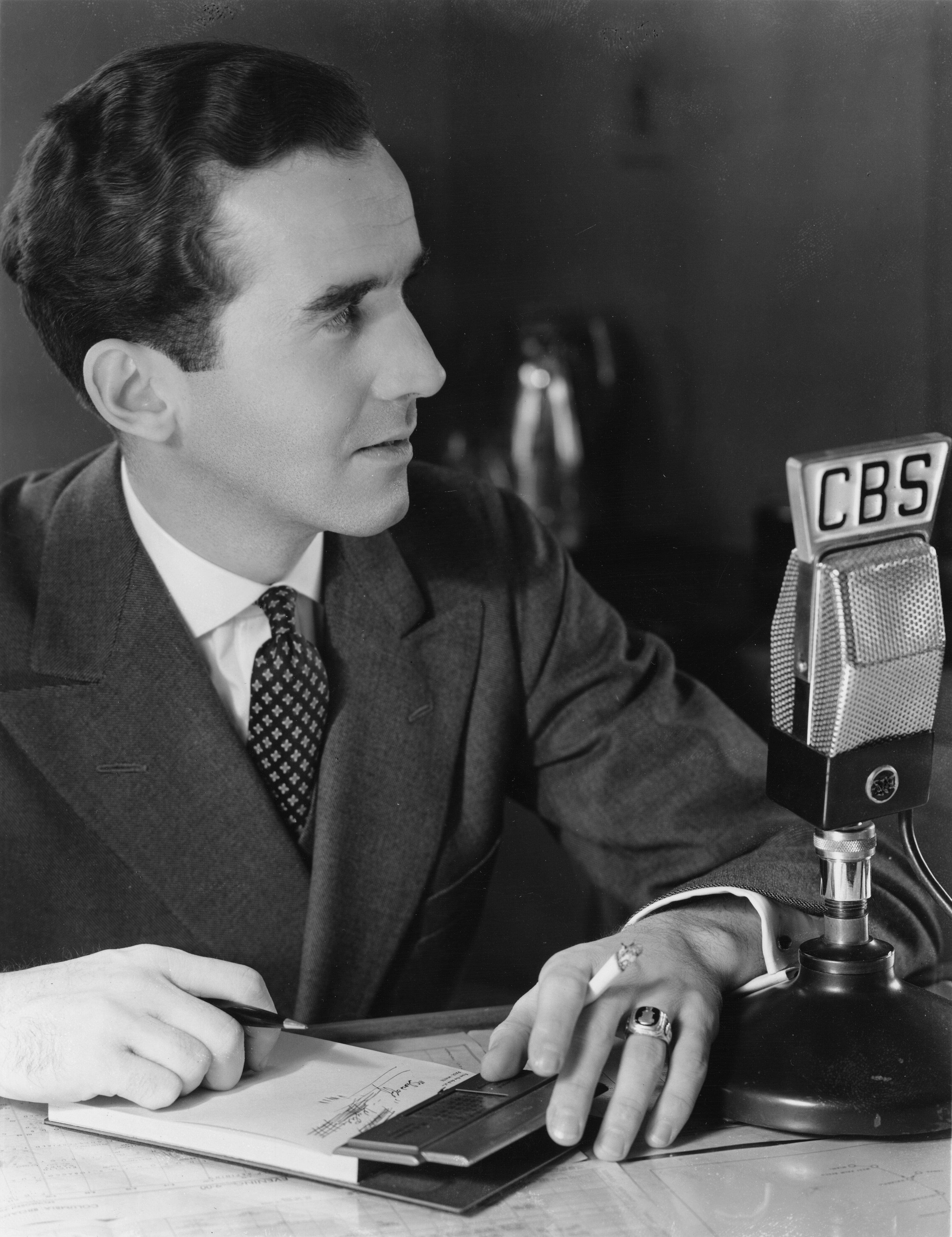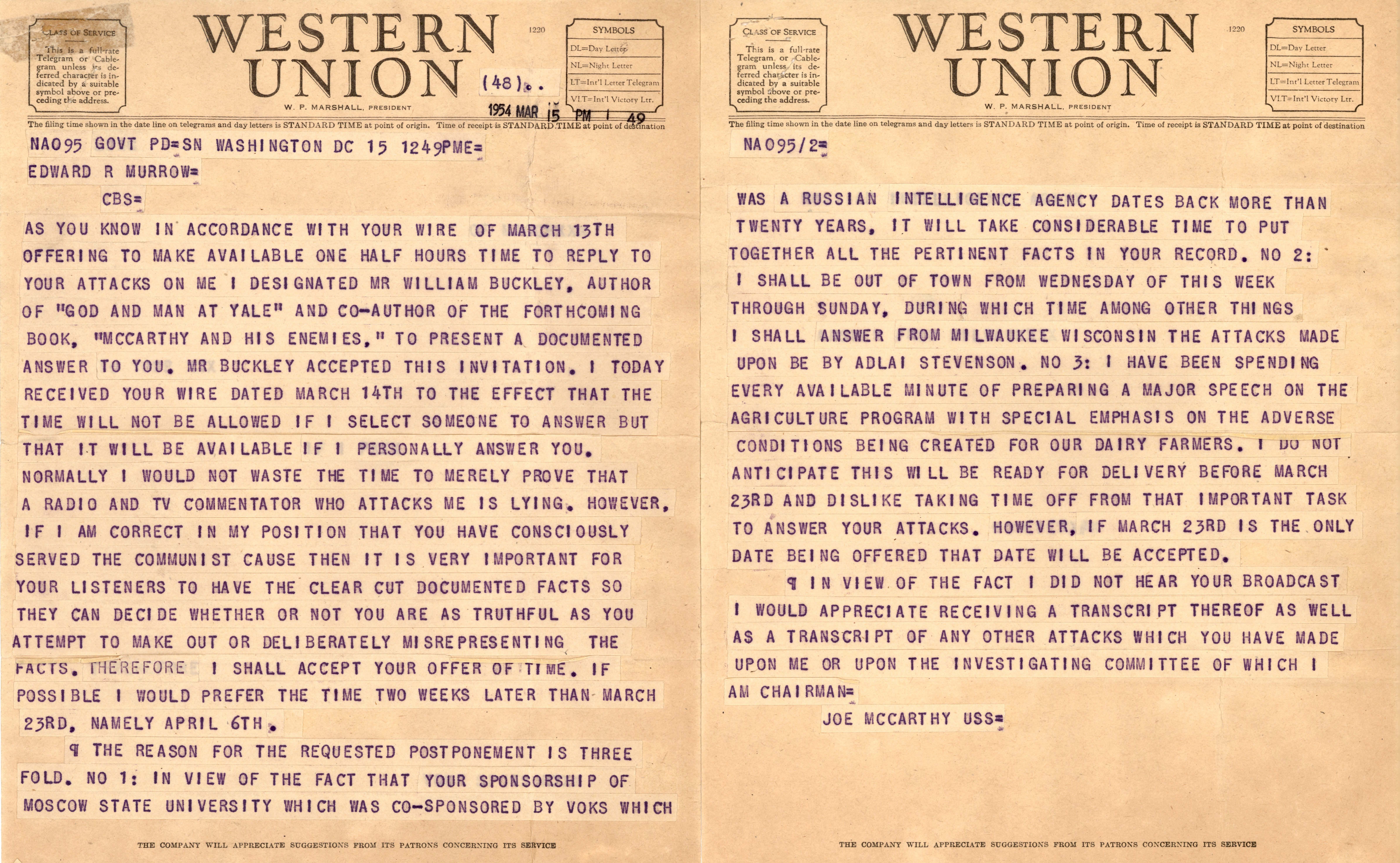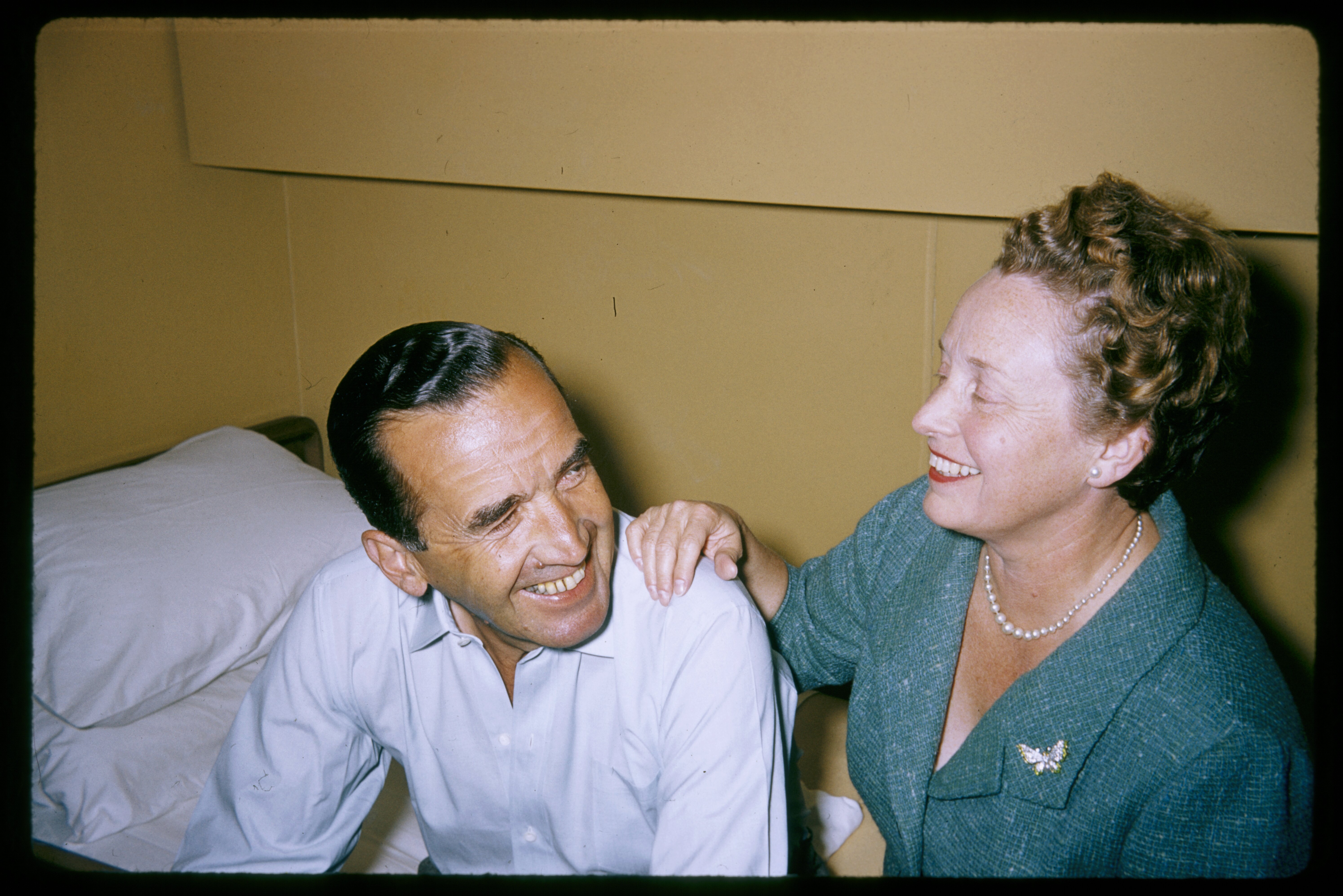The Edward R. Murrow Papers at TARC document the life and work of Edward Roscoe Murrow. Murrow is best known as a CBS broadcaster and producer during the formative years of U.S. radio and television news programs from the 1930s to the 1950s, when radio still dominated the airwaves, although television was beginning to make its mark. The collection documents Murrow’s work at CBS, including his reporting during World War II, his crusades against McCarthyism and the influence of corporate sponsorship and television advertising, and his popular interview series “See It Now,” which ran from 1951 to 1958. TARC holds the largest collection of Edward R. Murrow’s personal papers, including the telegram the McCarthy sent accusing Murrow of aiding the communist cause after a groundbreaking broadcast in 1951, and thousands of other documents and photographs.
Murrow was born on April 25, 1908, into a working-class family of Quaker farmers near Greensboro, North Carolina. After graduating from the State College of Washington in 1930 with a bachelor’s degree in speech, Murrow moved to New York City to work for the National Student Federation of America (NSFA), and then the Institute of International Education (IIE). While at an NSFA Conference in New Orleans, Murrow met Janet Brewster, who was then Student Council President at Mount Holyoke College. They married in 1934.
Murrow’s career in journalism began a year later at the CBS Radio Network. By 1937, he was sent to the London office to head the continental European Bureau for cultural broadcasting. After the Sudetenland occupation in 1938 and Murrow’s extensive coverage, Murrow successfully petitioned CBS to expand programming on the war. During World War II Murrow gained prominence for his extensive eye-witness reporting from London. He recruited a team of journalists—nicknamed ‘Murrow Boys’—to broadcast news to Americans from Europe, Africa, and Asia.
After 1946, Murrow returned to the United States. He gained particular renown for his work on programs including Hear It Now, This I Believe, Person to Person, and Years of Crisis. Murrow also produced the documentary news series See it Now, which, in 1951, criticized Senator Joseph McCarthy’s anti-communist censorship record. Murrow would produce interview shows and documentaries for CBS until 1961, leaving to serve as director of the U.S. Information Agency for the Kennedy administration until 1964. On April 27, 1965, Murrow died of cancer.
The Edward R. Murrow Papers at TARC hold correspondence, personal materials, work files, scripts, diaries, photographs, audiovisual materials, memorabilia, awards, books, clippings, and posthumous tributes documenting Murrow’s professional career and personal life, as well as the work of his wife Janet Brewster Murrow and the ‘Murrow Boys’ broadcasts during World War II. The bulk of the material is composed of professional correspondence from 1930 to 1965. The collection reveals not only Murrow's demanding radio and television work, but also his extensive involvement with various foundations, professional organizations and associations, album productions, written publications, and travels. In addition, the collection includes a CBS subseries covering the administration, program and business operations, correspondents, and nine regularly scheduled programs, as well as special programs, scripts and sponsors during Murrow’s tenure. Thousands of photographs, phonograph records, films, and audiotape reels are available. Of these materials, over 900 photographs and news audiotapes have been digitized.
Finally, there are approximately 1,600 books shelved in the Murrow Memorial Room at the Fletcher School, alongside with Murrow’s memorabilia, mostly in facsimile. This includes an oak table used by the Murrows in their London apartment during World War II.
In addition to the Murrow Papers themselves, Tufts Archival Research Center is home to several collections donated by the Murrow family, including the Janet Brewster Murrow and Edward R. Murrow Family Papers and the Casey Murrow Collection on Edward R. Murrow.
More information on Edward R. Murrow is available at TARC’s online exhibit: The Life and Work of Edward R. Murrow.
Link to Collection: https://archives.tufts.edu/repositories/2/resources/304.










